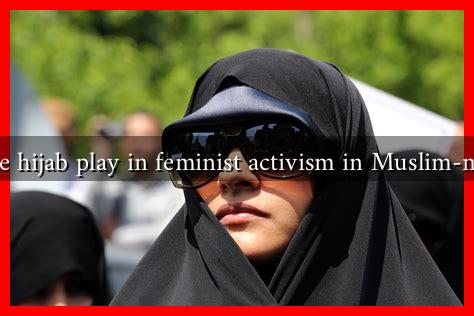-
Table of Contents
What Role Does the Hijab Play in Feminist Activism in Muslim-Majority Countries?
The hijab, a traditional headscarf worn by many Muslim women, has become a symbol of both empowerment and oppression in various contexts. In Muslim-majority countries, the hijab plays a complex role in feminist activism, serving as a focal point for discussions about identity, autonomy, and resistance against patriarchal structures. This article explores the multifaceted relationship between the hijab and feminist movements in these regions, highlighting its significance in the ongoing struggle for women’s rights.
The Hijab as a Symbol of Identity
For many women, the hijab is not merely a piece of clothing but a profound expression of their cultural and religious identity. In countries like Iran, where the hijab is mandated by law, it has become a symbol of resistance against state-imposed norms. Conversely, in nations like Turkey, where the hijab was historically banned in public institutions, it has emerged as a symbol of personal freedom and choice.
- Iran: The 1979 Islamic Revolution led to the enforcement of the hijab, which many women initially resisted. However, over time, the hijab has also become a symbol of defiance against authoritarianism.
- Turkey: The lifting of the hijab ban in 2013 allowed women to express their religious identity freely, leading to a resurgence of hijab-wearing among young women as a form of empowerment.
Feminist Activism and the Hijab
Feminist movements in Muslim-majority countries often grapple with the hijab’s dual nature. Activists argue that the hijab can be both a tool of oppression and a means of empowerment, depending on the context in which it is worn. This duality is evident in various feminist discourses:
- Choice vs. Coercion: Many feminists advocate for the right of women to choose whether or not to wear the hijab, emphasizing that autonomy is a fundamental aspect of feminism.
- Intersectionality: Feminist activists highlight the importance of considering cultural, religious, and socio-economic factors when discussing the hijab, arguing that a one-size-fits-all approach to women’s rights is inadequate.
Case Studies of Feminist Movements
Several feminist movements in Muslim-majority countries have utilized the hijab as a central theme in their activism:
- Iranian Women’s Movement: The “My Stealthy Freedom” campaign, initiated by Masih Alinejad, encourages women to share images of themselves without the hijab, challenging the compulsory hijab laws in Iran.
- Egyptian Feminism: In Egypt, the hijab has been a point of contention among feminists. Some view it as a symbol of oppression, while others embrace it as a personal choice, leading to diverse feminist perspectives within the movement.
Statistics and Public Opinion
Public opinion on the hijab varies significantly across Muslim-majority countries. According to a 2017 Pew Research Center survey:
- In countries like Indonesia and Malaysia, a significant majority of women support wearing the hijab as a personal choice.
- Conversely, in nations like Tunisia, where secularism is more pronounced, there is a growing movement against the hijab as a symbol of religious conservatism.
The Global Perspective
The hijab has also gained international attention, often becoming a focal point in discussions about Islamophobia and women’s rights. Activists argue that the hijab should not be viewed solely through a Western lens of oppression but rather as a complex symbol that can embody both resistance and empowerment.
For more insights on this topic, you can explore resources from organizations like Women Living Under Muslim Laws, which provide valuable perspectives on women’s rights in Muslim contexts.
Conclusion
The hijab plays a significant role in feminist activism in Muslim-majority countries, serving as a complex symbol of identity, autonomy, and resistance. While it can represent oppression in certain contexts, it also embodies empowerment and personal choice for many women. As feminist movements continue to evolve, the hijab will likely remain a central theme in discussions about women’s rights, identity, and the ongoing struggle against patriarchal norms. Understanding this duality is crucial for fostering a more nuanced dialogue about feminism in diverse cultural contexts.

